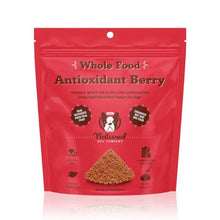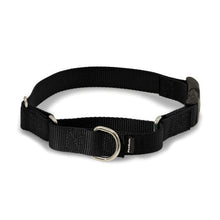Raw diets are controversial diets that are new to many people, but as old as the domesticated dog itself. Raw diets are gaining in popularity at a phenomenal rate. It's now at the point that raw diets can even be found pre-made at not only pet stores, but in the cold food and freezer aisles at grocery stores. Here's what you need to know about making your own.
Dogs can get all the nutrition they need from the meat, organ and bones found in prey animals. Today we're going to talk about a Prey Model Raw diet (PMR from here on out). Check the end of the article for foods to avoid.
The PMR gets it's name from the fact that it mimics the contents of a prey animal by their meat, organ and bone content. The PMR diet calls for 80% muscle meat (which includes the heart), 10% organ (liver, brain, pancreas, kidney, spleen) and 10% edible bone.
To make raw feeding simple, keep it simple and relax. You should start by feeding 2-3% of your dog's ideal target weight. But what if, for example, your dog is very active and still loses a little weight when fed 3%? Again, keep it simple and relax. Simply feed more when you notice the weight loss. No need to panic. If you're switching from kibble to raw it's normal to be nervous, but exercise common sense and you'll be fine!
What about sourcing food to keep things simple? You can buy in bulk at the grocery store, and talk to the butchers that are working in the meat section. You can also visit your local butcher, talk to local farmers; and even contact restaurant supply companies if you have the freezer space or a lot of dogs. Speaking of freezer space, buy a deep freezer. The bigger the better. You'll be glad you have extra space if you come across a good deal on 100lbs of meat and it'll make raw feeding easier!
What should you buy to keep a raw diet simple? Simple answer: Buy what's cheap! Chicken necks and backs are very inexpensive, so are chicken quarters and livers. You can also buy whole chickens and cut them up. Avoid chicken that has "added salt solution." Read the packaging, they'll list any additives. Chicken quarters, thighs, legs and necks with the skin can be fattening. You should trim the fat off if your dog isn't active or is overweight. Raw poultry bones are probably going to be your #1 source of bone.
Pork is also cheap, but certain parts like pork bellies are very fatty. Pork necks contain a lot of edible bone.
As far as beef goes, there are lots of inexpensive cuts of beef that are mostly for stewing and contain little fat. Cuts like sirloin tri-tip roast, top chuck roast, first cut chuck roast, top blade roast, bottom round roast, chuck shoulder roast and bottom round rump roast are inexpensive and good for the base of your dog's diet.
Fish, especially oily fish are very healthy. Feed at least twice a week.
Organ can be tricky to source. Many Asian and Latino food markets have organ for sale. You can also try local farms. Many simply throw out organ. If you can't find what you're looking for, many raw diet vendors exist online. You can have frozen organ delivered to your door on ice!
Sourcing bone is easy. You'll do it by accident when feeding bony cuts of poultry mostly. Your dog's droppings will be much harder when feeding raw. This often results in healthier anal glands. If your dog's stool is too soft, add more chicken necks, feet, backs, pork necks, ribs etc to solve the issue. If your dog seems to have too much difficulty going, you should cut back on the bone.
Now you know what to feed, how much to feed and even where to source your dog food, but here's where we make it really easy. A lot of people meticulously weigh their food and prepackaged and freeze a week or even a month's worth at a time. They balance each meal with an exact amount of meat, organ and bone and it takes hours! The secret is that not every meal has to be balanced. You don't weigh and balance each meal of your own, do you? Your diet balances itself out over time. You can do the same with your dogs raw diet.
Instead of a lot of pre-packaging, simply thaw out 3 days worth of meat and bone and 3 days worth of organ. Just mix and match meals and let them balance over time. For example, on Sunday you could put 3 days of frozen chicken quarters, beef chuck, mackerel and calf liver in the fridge to thaw. Then you have meat ready to put in your dog bowls from Monday - Wednesday night.
On Wednesday evening, you could put 3 days worth of goat meat, turkey necks and sheep kidney in the fridge to thaw. When it's time to feed on Thursday morning, add a sardine or 2 (if canned, make sure they're canned in water), as well as a raw egg with shell to your dog's breakfast. Do the same Thursday, Friday and Saturday morning. That's 3 eggs and 3-6 sardines from Thursday-Saturday (3 eggs a week are plenty). That also covers every meal from Thursday-Saturday. On Saturday evening, take out another 3 days of food and repeat.
Now you're on an easy schedule where you don't have to bag entirely balanced meals for every meal of every day of the week. You've cut down your bagging from 2 or 3 meals a day per month (60-90 meals prepped) to 10 pre-packaged 3 day meals a month! Remember, just relax! I do suggest you start by weighing your food, but after a couple of months you'll be able to eyeball how much food is enough for each of your dogs. If you notice a dog seems to be losing or gaining a little weight, that's no problem. Dogs lose and gain weight very fast. Just feed a little extra, or a little less depending on the circumstances and you'll notice the difference in your dogs weight inside of a few days. Once you master eyeballing the amounts of food to feed and learn to eyeball your dog's weight, scales become unnecessary, which will save you more time and make things that much simpler.
To conclude, I said that I would go over items to never feed. Here's a quick list:
1: No wild pork or bear EVER. Wild pork and bear alike can contain parasites. Farmed pork in the US and Canada are safe. If you live outside of the US/Canada, do your research on how safe your farmed pork is, but I suggest leaving it alone entirely to be safe.
2: Freeze all wild prey items for 3 weeks to kill any parasites. If you procure wild deer, elk, goose, rabbit etc, be sure to freeze it for 3 weeks. Also remember #1. No wild pork and no bear ever. Not even after freezing.
3: Do not feed raw salmon or salmonid species of fish from the Pacific Northwest. It can contain a bacterium that's dangerous to dogs. Canned salmon and mackerel are cooked and perfectly safe. Farmed, raw salmon is also fine and usually comes from Norway. Fish, especially oily fish, are very healthy. Avoid fish with sharp spines and barbs, like catfish, unless they're removed.
4: Don't feed the weight bearing bones of large prey. They are hard and will cause premature wear, or even breakage of the teeth. If the prey animal is bigger than about 10lbs, only feed the spine and ribs to be safe. No leg bones, pelvis etc.
5: If you do feed plants, remember that they aren't necessary and that your dog cannot digest them without them being cooked or pulped. Please do your research so that you know what vegetables and fruits are safe to feed!
6: Dogs are lactose intolerant. Avoid cow's milk completely and limit cheeses and yogurts. Make sure yogurts are plain.
7: Ground meats are okay to feed, but make sure they're fresh. Grinding up meat mixes the germs on the outside of the meat all throughout the ground meat. Also remember that ground meats don't contain bone (unless otherwise specified) and do not have the added bonus of cleaning teeth. Feed the leanest ground products possible.
Thank you for reading. It's impossible to have a full, comprehensive conversation about raw feeding in an article. This is a guideline for those who are interested. I suggest you read books and source information from several authors and friends who feed raw to best educate yourself.
If you found this article interesting or useful, don't forget to hit 'LIKE' and 'SHARE' to share this with your friends, family and fellow dog enthusiasts!

























